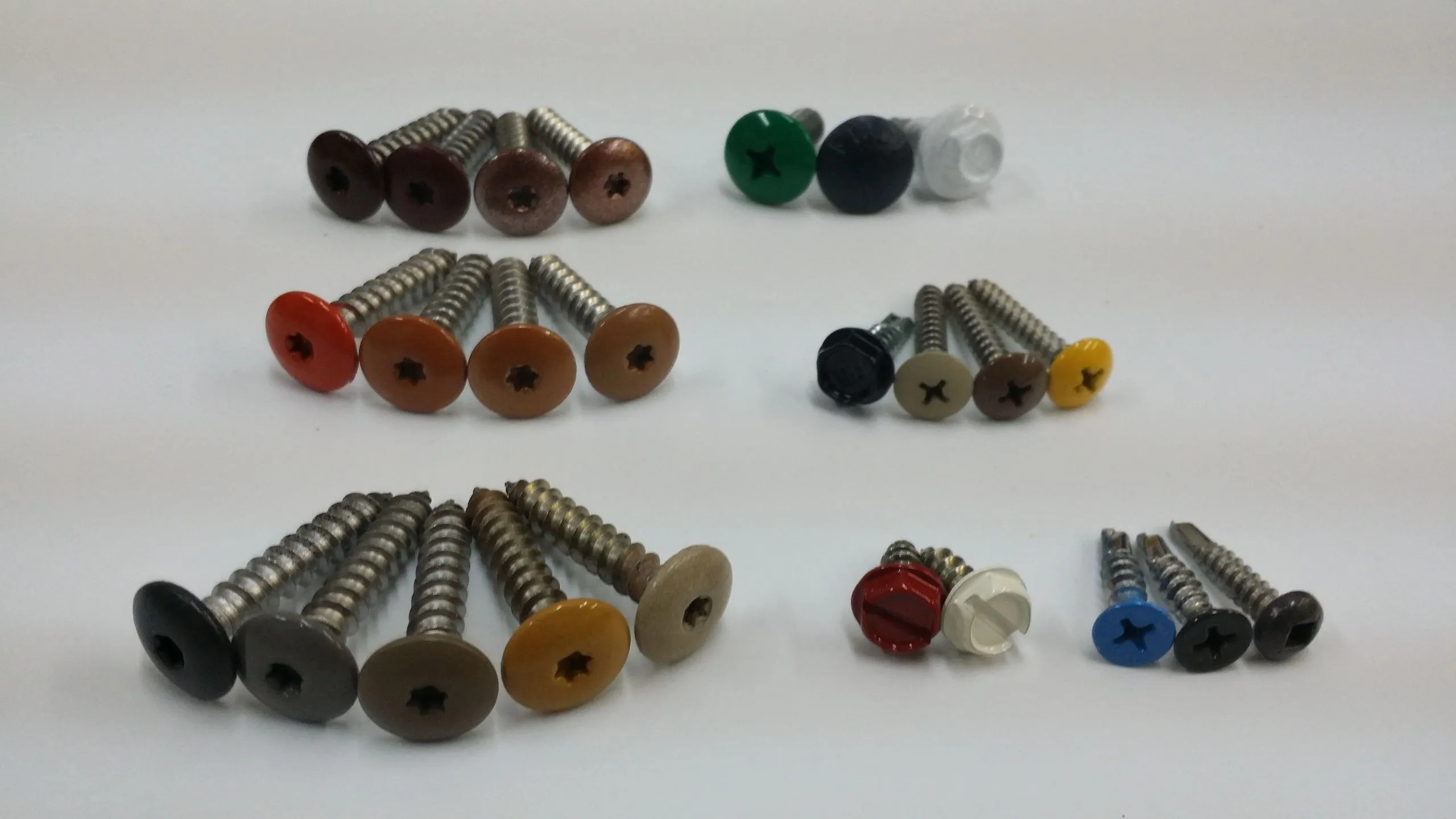In addition to coatings and other forms of metal fastener surface protection, JC Grand offers painting and color matching. For some applications, a specific color is the goal. However, many commercially available paint brands allow for a large increase in corrosion protection as well.
Broadly speaking, there are two categories of paint systems for metal fasteners: liquid paints and powder paints. We offer both types of coatings to our clients, but specifically recommend using power coats whenever possible.
Powder coating is a type of coating that is applied as a free-flowing, dry powder. The main difference between a conventional liquid paint and a powder coating is that the powder coating does not require a solvent to keep the binder and filler parts in a liquid suspension form. The coating is typically applied electrostatically and is then cured under heat to allow it to flow and form a “skin.” The powder may be a thermoplastic or a thermoset polymer. It is usually used to create a hard finish that is tougher than conventional liquid paint.
The powder coating process uses finely ground particles of pigment and resin which are sprayed onto the metal fastener head using an electrostatic spray process, causing the charged particles to permanently bond to the metal surface. The powder is then heated and fused into a smooth coating in a curing oven at up to 200°C, melting the powder onto the metal. This eliminates the risk of chipping, damage or fading.
There are many advantages of powder coating over conventional liquid coatings:
- Powder coatings emit zero or near zero volatile organic compounds (VOC).
- Powder coatings can produce much thicker coatings than conventional liquid coatings without running or sagging.
- Powder coating over-spray can be recycled and thus it is possible to achieve nearly 100% use of the coating.
- Powder coating production lines produce less hazardous waste than conventional liquid coatings.
- Powder coated items generally have fewer appearance differences between horizontally coated surfaces and vertically coated surfaces than liquid coated items.
- More finishes are available - powder coatings are available in a vast array of colors, metallic, anodic styles, gloss levels and even textures.
- Better scratch resistance - powder coatings are inherently tough. With this comes an improved scratch resistance of around 4H for powder compared with only around H for liquid paint.
- Improved gloss retention - powder coatings provide a more consistent gloss retention performance than liquid coatings.
- Great corrosion protection - powders can achieve much higher salt spray resistance than liquid thermopolymer systems.
- Thermosetting properties and inherent toughness mean powder coated surfaces are less susceptible to the settling of dirt and mildew growth, unlike softer, thermoplastic liquid coatings.

